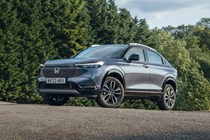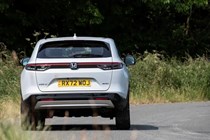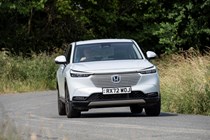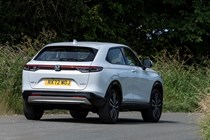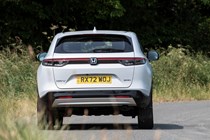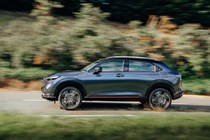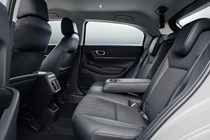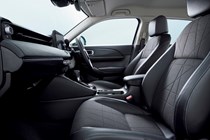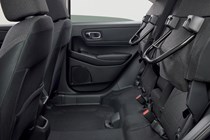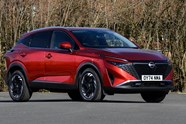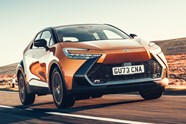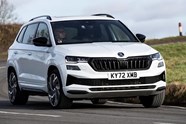
Honda HR-V Review: Reliable? Yes. Riveting? Not Really...
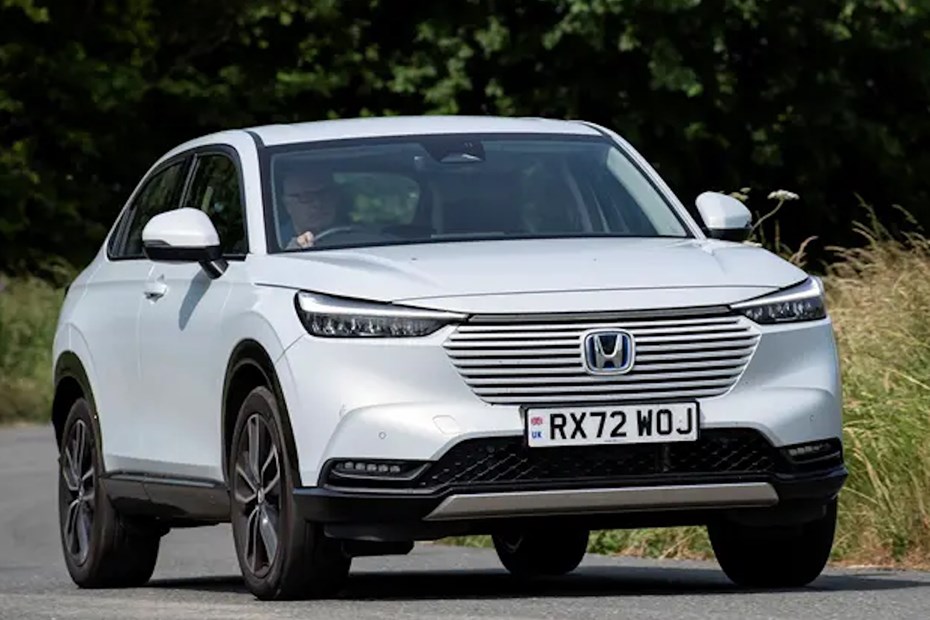
At a glance
| Price new | £32,250 - £38,825 |
|---|---|
| Used prices | £15,978 - £30,025 |
| Road tax cost | £195 |
| Insurance group | 32 - 33 |
Get an insurance quote with

|
|
| Fuel economy | 52.3 mpg |
| Miles per pound | 7.7 |
| Number of doors | 5 |
| View full specs for a specific version | |
Available fuel types
Hybrid
Pros & cons
- Great amount of standard equipment
- Impressive handling and ride quality
- Fuel economy claims are achievable
- Boot is tiny compared to rivals
- Engine is very noisy when pushed
- Performance is lacking when out of town
Honda HR-V SUV rivals
Overview
Like many cars in this day and age, the Honda HR-V is referred to as a coupe SUV. This simply means it borrows design touches, such as a sloping roofline, from sleekly designed two seaters, but combines it with the practicality of a small-ish high-riding family car. In reality, it’s no such thing, and it’s more of a straight rival to a collection of family SUVs competitors we’ve listed below.
If you do want a sleek appearance, the Renault Arkana and Toyota C-HR also class themselves as coupe SUVs, and we can see the attraction of both of them. However, the Skoda Karoq is our benchmark car in the small SUV class, with the big-selling Nissan Qashqai chasing very hard.
The Honda HR-V is relatively compact, however, so other smaller SUVs, such as the Ford Puma, Nissan Juke, Vauxhall Mokka and Skoda Kamiq are rivals as well as the aforementioned challengers. Now, take a breath and let’s consider the Honda itself, which packs a tonne of technology under the bonnet, much of it shared with the highly-acclaimed Honda Civic hatchback.
We’ve extensively driven the HR-V since it was launched, and you can find out more about how we test on Parkers via our dedicated explainer page. In addition to testing a number of examples, our reviewer Percy Lawman has also run one for six months in a long-term test to see how it is to live with.
Unlike many of its rivals, there’s only one engine on offer, so your choice is very straightforward. It’s a 1.5-litre self-charging hybrid capable of high mpg and low emissions. Think of it as a smaller version of the drivertrain you’ll find in our car of the year-winning Civic hatchback. Although, we’re disappointed to report that it is on the loud side of acceptable. More on that in the engines section of this review.
There are now only two trim levels to choose from, too, as the previously available entry-level Elegance has been dropped. Advance includes a touchscreen infotainment system, heated seats and a rear-view camera, as well as a clever air diffusion system that blows air around the car rather than directly at occupants. Advance Style is top spec but is all about visual upgrades, as the name suggests.
The HR-V has a lot going for it, but so does the competition, which seemingly sprouts new entrants vying for your monthly payments on a daily basis. Does the HR-V have what it takes to get a recommendation from us? Keep reading our six-page review to see how we rate the HR-V for practicality, efficiency, ease of use and dynamic prowess.



